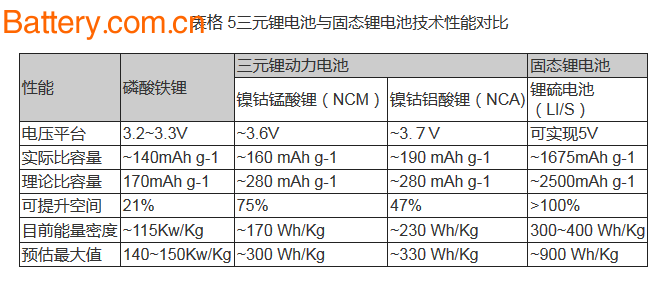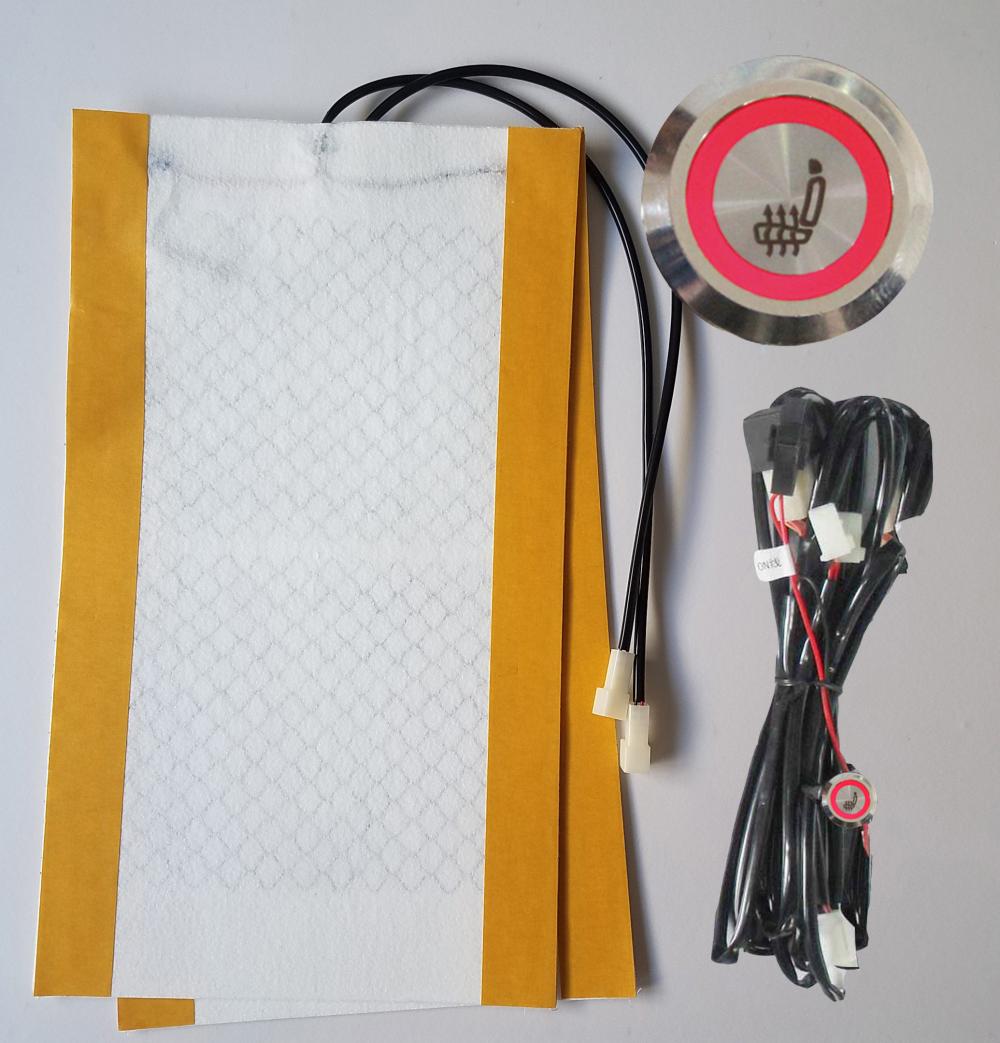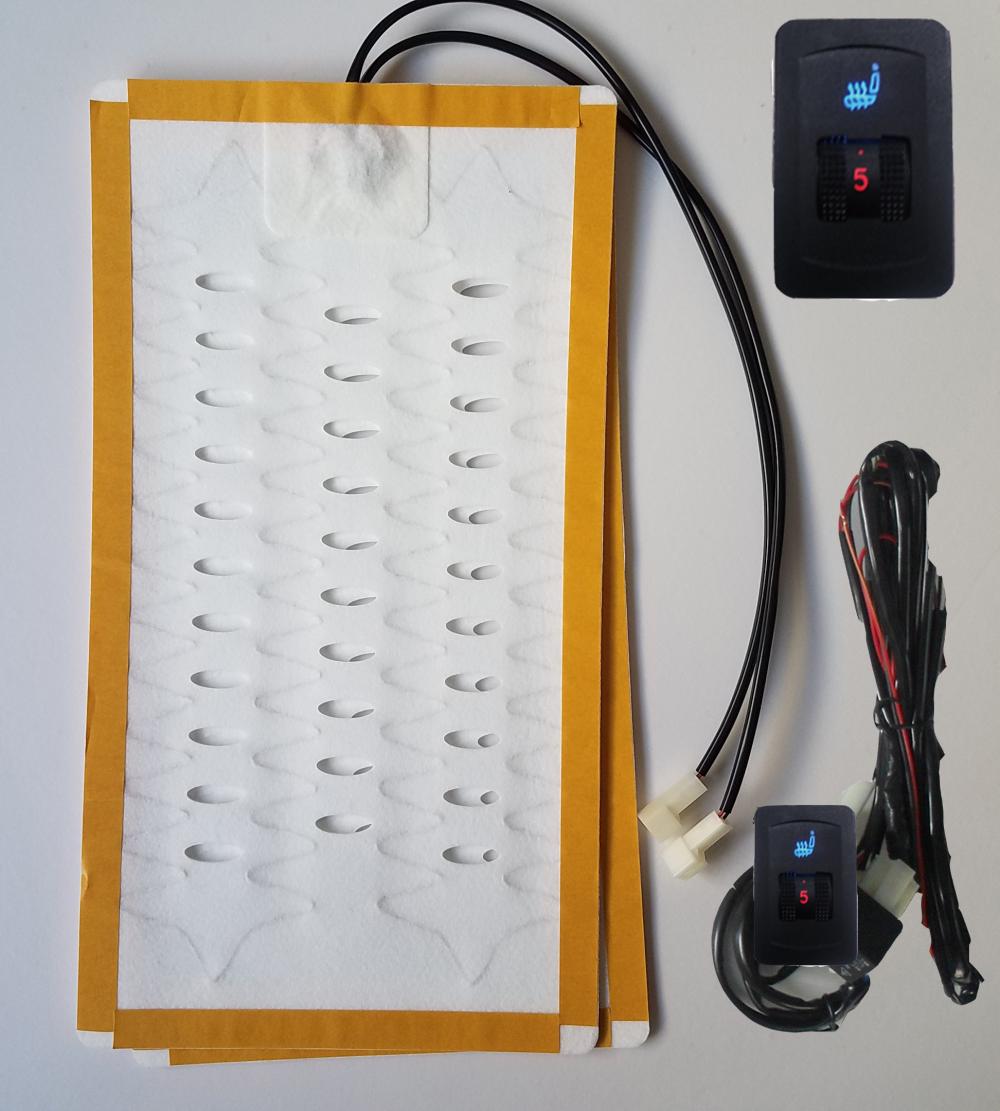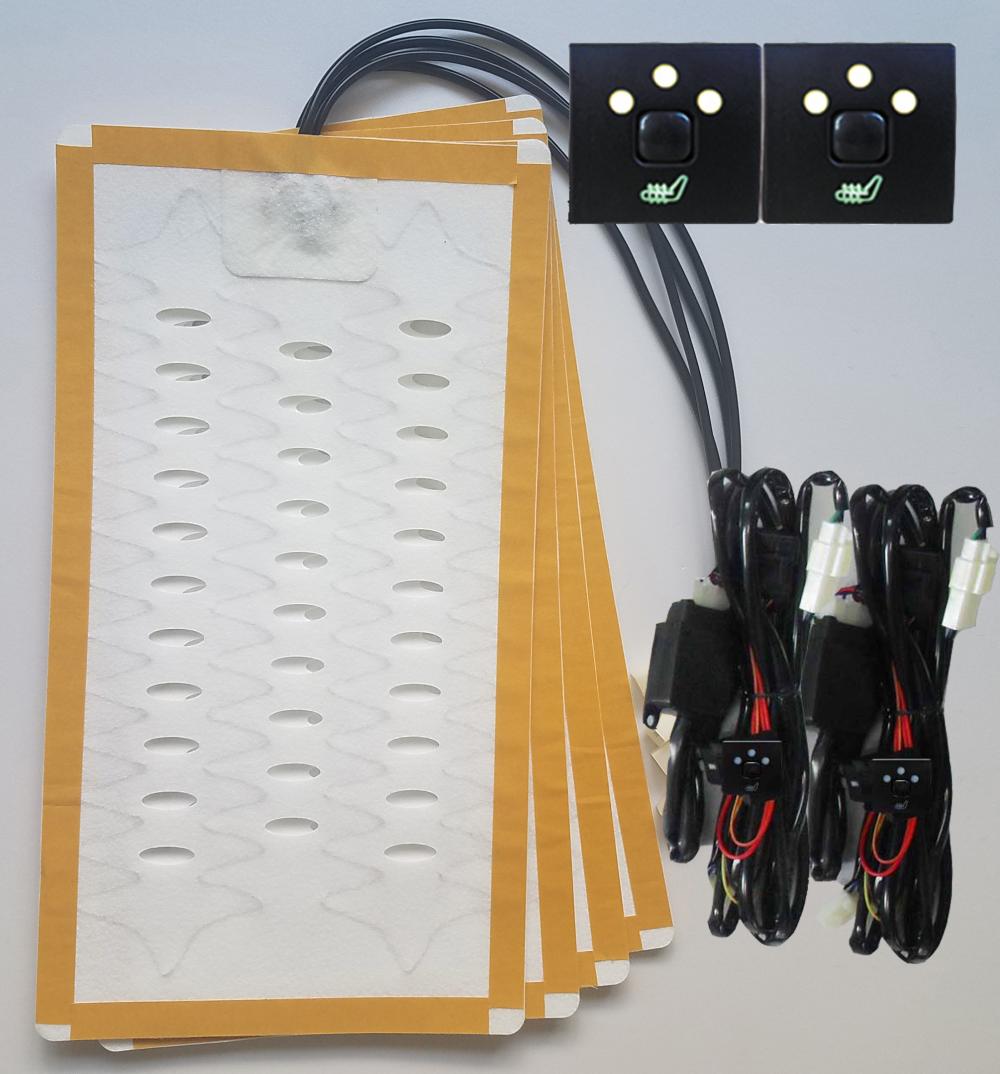The trend of electrification is intensifying. China has become the world's largest new energy vehicle market through policy guidance and support. As we all know, the important bottleneck of new energy vehicles is the battery life. In this context, the state has issued the "Promoting Action Plan for Promoting Automotive Power Battery Development" and "Technology Roadmap for Energy Saving and New Energy Vehicles" to encourage the use of high energy density batteries. The recent "Guidance Catalogue for Foreign Investment Industries (2017 Practice)" The policy proposes to lift the restrictions on pure electric vehicle joint ventures and to eliminate the restrictions on the ratio of automotive electronics and power battery stocks. This is also an important measure to promote the application of high energy density batteries in the new energy vehicle market. Based on the policy push and the advancement of the power battery technology itself, Zhidian Automobile will analyze the development model of the future power battery through the analysis of the product model of the ternary lithium and solid lithium battery.
First, the status quo of power battery development
At present, domestic new energy vehicles are still using lithium iron phosphate (BYD-based) and ternary lithium batteries. The cruising range of the models can basically reach 300 kilometers, but the average energy density of the battery system is only 115 Wh/Kg. In March 2017, the four ministries and commissions of the Ministry of Industry and Information Technology jointly issued the Action Plan for Promoting the Development of Automotive Power Batteries, stating that by 2020, the specific energy of the new lithium-ion power pool should be more than 300 Wh/Kg; 260Wh/Kg.

The data shows that the gap between the current energy density of the power battery and the target value in China is 126%. It is too difficult for the lithium iron phosphate battery to reach the target value in 2020, but it is entirely possible for the ternary lithium battery represented by Tesla. The power battery performance is good, and the BMS management system is also efficient; in addition, the solid state lithium battery can also increase the energy density of the battery system to 260Wh/Kg.
1, ternary lithium and lithium iron phosphate battery - the current mainstay
At present, the global new energy vehicle market has entered a critical period of vigorous development. Mainstream auto companies have laid out new energy vehicles. The rapid maturity of the lithium battery industry chain will further promote the large-scale application of new energy vehicles. From a global perspective, the typical car-supported models mainly use Japanese and Korean power batteries, mainly ternary lithium, and the cruising range basically reaches or exceeds 350 km.

Looking at the domestic market, from the first six batches of new energy vehicles in 2017, the energy density of the new models equipped with batteries has also increased to varying degrees. In the first batch of catalogues, the energy density exceeded 115Wh/Kg, which accounted for only 13.11%, and the proportion of the fifth batch of catalogues reached 73%. It can be seen that the increase in power density of power batteries is the trend of the times. The power battery of the mainstream electric vehicle enterprises has also gradually transformed into a three-element lithium, and the cruising range can basically reach the level of 300 kilometers.

Looking at the situation of domestic and international power battery companies carrying new energy vehicles, the trend of ternary lithium batteries becoming the mainstream technology route has been irreversible, but there is still room for improvement in the mileage of the entire vehicle. This is probably due to many reasons such as the low energy density of the power battery and the room for improvement in BMS efficiency.
2, full solid lithium battery - the future direction of development
The research and development goals of high-energy-density lithium batteries developed by countries all over the world are actively deploying forward-looking technologies such as lithium-sulfur batteries, lithium-air batteries or lithium-metal batteries.
On the basis of inheriting the advantages of traditional lithium batteries, solid-state lithium batteries have made significant progress in safety and energy density. At present, the energy density of all-solid-state lithium battery research and development can reach 300~400Wh/kg, which is expected to become an important development direction of the next generation of high-energy density power and energy storage battery technology. This is the consensus of academia and industry.


Global power battery affiliates have also accelerated the deployment of all-solid-state lithium batteries to seize the opportunities. At present, the industrialization process of various technology paths is different. Among them, polymer solid-state batteries are developing rapidly, and the laboratory has been completed due to its high-temperature work performance. It has been verified that a small number of enterprises have achieved small-scale industrialization.

In addition, in solid-state lithium batteries, sulfide solid-state batteries (lithium-sulfur batteries) have great potential for development due to their high energy density and low cost. Toyota, Samsung, CATL, Toyota and other domestic and foreign companies have accelerated their layout. Among them, Toyota Technology is the most advanced. Toyota introduced a sulphide solid-state battery in 2010. In 2014, its experimental prototype energy density reached 400Wh/kg. By the beginning of 2017, the number of Toyota solid-state battery patents reached 30, much higher than other companies. According to Toyota executives, Toyota will realize the industrialization of sulfide solid-state batteries by 2020. Domestic enterprise CATL is relatively leading in sulfide solid-state batteries, and is accelerating the development of sulfide solid-state lithium metal batteries for pure electric vehicles.

Third, the comparison and impact analysis of the two technical routes
1, ternary lithium battery: mature technology, currently dominates the market
From the perspective of product maturity, the US Tesla Model series has achieved breakthroughs, Model 3 is about to
Scale sales, further demonstrate the feasibility of ternary lithium battery. Model 3 uses the new 21700 battery, which is longer and thicker in appearance than the 18650 battery, and the energy density is also increased by 20%. The single battery capacity can reach 3~4.8Ah, a substantial increase of 35%. There is no doubt that the current ternary lithium battery is already a mainstream product.

2, solid-state lithium battery: technology potential, is expected to become the mainstream of the future
From the perspective of technical potential, the energy density increase of ternary lithium-ion battery is relatively difficult, and the energy density of all-solid lithium battery is increased, which is theoretically more feasible. First, the voltage platform of the all-solid lithium battery is improved. The solid electrolyte generally has a wider electrochemical window than the organic electrolyte, which is beneficial to further increase the energy density of the battery. Second, the solid electrolyte can block the growth of lithium dendrites, and the application system of the material is greatly expanded. Upgrade to lay the foundation for new lithium battery technology with higher energy density space. Third, the current energy density of all-solid-state lithium batteries is about 400 Wh/Kg, and the estimated maximum potential value is 900 Wh/Kg, which has more than 100% room for improvement. Solid-state lithium batteries are bound to be the mainstream products of the future.

3, solid lithium battery: high security, can greatly reduce the vehicle's self-ignition rate
In recent years, there have been many spontaneous combustion accidents of new energy vehicles at home and abroad, and the use of new energy vehicles has become more and more concerned. The main reason lies in the problem of power battery (mainly ternary lithium), and the control of electrical safety, functional safety, chemical safety and mechanical safety of ternary lithium battery is still not strong. In general, the liquid electrolyte of the ternary lithium battery is flammable and explosive, and it is easy to trigger "thermal runaway" during long-term use. In the process of charging and discharging, the growth of lithium dendrites easily pierces the diaphragm, causing short circuit of the battery and causing safety hazards. However, the all-solid lithium battery has extremely high safety. Its solid electrolyte is non-flammable, non-corrosive, non-volatile, and liquid-free, and it also overcomes the phenomenon of lithium dendrite. The self-ignition probability of a car equipped with an all-solid lithium battery will be greatly increased. reduce.

Based on the comparison of the above products, technologies and safety, all-solid lithium batteries have absolute advantages in terms of safety and technical potential, but ternary lithium batteries have considerable advantages in product maturity and market penetration. On the whole, the current use of ternary lithium batteries is the most sensible choice for pure electric vehicles. However, once the all-solid-state lithium battery solves the problem of poor stability of metallic lithium, a strong product replacement force will be erupted, or the power battery industry will be subverted.

5. Predicting the development pattern of high-energy power battery
As mentioned above, the country's policy orientation has been very clear, and vigorously support the development of new lithium-ion power batteries with high energy density, and there are already corresponding policy details. Mainly in three aspects: First, in June 2017, the Ministry of Industry and Information Technology issued a double point policy, through the high energy density to reduce battery quality and obtain a low 100 kilometers of electricity consumption Y, you can get 1.2 times points; second, the end of last year The subsidy policy emphasizes that the high energy density (the energy density of the passenger car battery >120 Wh/Kg) can be subsidized by 1.1 to 1.2 times. The third is the passenger car from the list of new energy vehicles that must be entered to obtain subsidies. The proportion of ternary lithium battery models continues to increase. This year's sixth batch of models accounted for more than 70% of the total, which has promoted the development of high energy density batteries.
However, despite the good achievements in the promotion and application of new energy vehicles in China, pure electric passenger car products for private consumers are still affected by “mileage anxiety†and have not yet achieved large-scale application. The breakthrough and satisfaction of the private demand market has further increased the energy density of the power battery. As far as the current situation is concerned, only the ternary lithium battery and the solid lithium battery may reach the 2020 goal. This will lead to a new pattern of domestic power battery technology.
The first category, technology-leading, is represented by CATL. The CATL enterprise itself already has a ternary lithium battery technology precipitation, and its products will use silicon carbon materials as the negative electrode. It is expected to achieve the 350Wh/kg target during the 13th Five-Year Plan period. At the same time, CATL is in solid-state lithium battery (lithium-sulfur battery, polymer battery). ) A breakthrough has been made, such as the high-temperature cycle performance of polymer cells with a capacity of 325 mAh designed and manufactured by CATL. The leading and advanced layout of technology can ensure that enterprises occupy a commanding height in the application and promotion of new technologies.
The second category, the technology-following type, is represented by Guoxuan Hi-Tech and Lishen. Guoxuan Hi-Tech, Lishen and other companies have a strong market base and are accelerating the development of ternary lithium battery technology with high battery energy density. For example, the official website of the Ministry of Science and Technology on the breakthrough of Guoxuan Hi-Tech ternary lithium battery technology, said it uses "high nickel positive electrode + silicon-based negative electrode" as the battery material, laboratory battery energy density level of 281 Wh / kg. However, such companies have little or no involvement in solid-state lithium battery technology reserves, and such companies will accelerate joint ventures with companies such as Samsung Japan Research Institute, Sakti3 (USA), and Qingtao Energy with all-solid-state lithium battery technology.
The third category, the technology transformation category, is BYD and Wanxiang. BYD, Wanxiang and other enterprises, their core products, lithium iron phosphate battery, have limited space for energy density increase, gradually reduce the impact of lithium iron phosphate battery, and accelerate the transformation of the ternary lithium battery technology route. Among them, Wanxiang's A123Systems lithium iron phosphate product energy density stopped at 140Wh / kg; BYD plans to achieve energy density of 240Wh / kg in 2018 ternary lithium battery, reaching 300Wh / kg in 2020. These enterprises have strong technical accumulation and research and development support, and have strong technical sense of smell, or will strengthen cooperation with the Institute of Chinese Academy of Sciences Qingdao Energy Institute, National Energy Battery Research Institute and other research institutes to accelerate the development of all-solid-state power batteries.
All in all, the lithium iron phosphate technology route is being replaced, and the ternary lithium battery technology route has become the mainstream. In the future, the all-solid lithium battery or new lithium-ion battery technology route will gradually replace the ternary lithium.
Fourth, development advice
In the future, the health and scale promotion of new energy vehicles will largely depend on the support of high-security, high-powered power batteries. At present, the progress of new energy vehicle power battery technology is driven by the dual pressures of national policies and external competition. This requires the continuous improvement of the existing ternary lithium battery technology, and also requires new lithium-ion battery technology research and breakthrough to achieve subversion. Sexual innovation. To the power battery company, it is the best period and the worst period. Zhidian Automobile believes that the “tough battle†of battery energy density has started, and the power battery industry will be shuffled. In order to enter the competitive echelon in the future, it is necessary to focus on two points: First, change the way of thinking and “staying in peaceâ€, and transform from extensive scale development to “technology and scale†and accelerate the development of all-solid lithium batteries or The new lithium-ion battery technology reserve; the second is to pay attention to the safety of the product, not only to strengthen cooperation with the vehicle companies, but also to avoid the "Tallian airbag" incident in the power battery industry.
First, the status quo of power battery development
At present, domestic new energy vehicles are still using lithium iron phosphate (BYD-based) and ternary lithium batteries. The cruising range of the models can basically reach 300 kilometers, but the average energy density of the battery system is only 115 Wh/Kg. In March 2017, the four ministries and commissions of the Ministry of Industry and Information Technology jointly issued the Action Plan for Promoting the Development of Automotive Power Batteries, stating that by 2020, the specific energy of the new lithium-ion power pool should be more than 300 Wh/Kg; 260Wh/Kg.

1, ternary lithium and lithium iron phosphate battery - the current mainstay
At present, the global new energy vehicle market has entered a critical period of vigorous development. Mainstream auto companies have laid out new energy vehicles. The rapid maturity of the lithium battery industry chain will further promote the large-scale application of new energy vehicles. From a global perspective, the typical car-supported models mainly use Japanese and Korean power batteries, mainly ternary lithium, and the cruising range basically reaches or exceeds 350 km.


2, full solid lithium battery - the future direction of development
The research and development goals of high-energy-density lithium batteries developed by countries all over the world are actively deploying forward-looking technologies such as lithium-sulfur batteries, lithium-air batteries or lithium-metal batteries.
On the basis of inheriting the advantages of traditional lithium batteries, solid-state lithium batteries have made significant progress in safety and energy density. At present, the energy density of all-solid-state lithium battery research and development can reach 300~400Wh/kg, which is expected to become an important development direction of the next generation of high-energy density power and energy storage battery technology. This is the consensus of academia and industry.




1, ternary lithium battery: mature technology, currently dominates the market
From the perspective of product maturity, the US Tesla Model series has achieved breakthroughs, Model 3 is about to
Scale sales, further demonstrate the feasibility of ternary lithium battery. Model 3 uses the new 21700 battery, which is longer and thicker in appearance than the 18650 battery, and the energy density is also increased by 20%. The single battery capacity can reach 3~4.8Ah, a substantial increase of 35%. There is no doubt that the current ternary lithium battery is already a mainstream product.

From the perspective of technical potential, the energy density increase of ternary lithium-ion battery is relatively difficult, and the energy density of all-solid lithium battery is increased, which is theoretically more feasible. First, the voltage platform of the all-solid lithium battery is improved. The solid electrolyte generally has a wider electrochemical window than the organic electrolyte, which is beneficial to further increase the energy density of the battery. Second, the solid electrolyte can block the growth of lithium dendrites, and the application system of the material is greatly expanded. Upgrade to lay the foundation for new lithium battery technology with higher energy density space. Third, the current energy density of all-solid-state lithium batteries is about 400 Wh/Kg, and the estimated maximum potential value is 900 Wh/Kg, which has more than 100% room for improvement. Solid-state lithium batteries are bound to be the mainstream products of the future.

In recent years, there have been many spontaneous combustion accidents of new energy vehicles at home and abroad, and the use of new energy vehicles has become more and more concerned. The main reason lies in the problem of power battery (mainly ternary lithium), and the control of electrical safety, functional safety, chemical safety and mechanical safety of ternary lithium battery is still not strong. In general, the liquid electrolyte of the ternary lithium battery is flammable and explosive, and it is easy to trigger "thermal runaway" during long-term use. In the process of charging and discharging, the growth of lithium dendrites easily pierces the diaphragm, causing short circuit of the battery and causing safety hazards. However, the all-solid lithium battery has extremely high safety. Its solid electrolyte is non-flammable, non-corrosive, non-volatile, and liquid-free, and it also overcomes the phenomenon of lithium dendrite. The self-ignition probability of a car equipped with an all-solid lithium battery will be greatly increased. reduce.


As mentioned above, the country's policy orientation has been very clear, and vigorously support the development of new lithium-ion power batteries with high energy density, and there are already corresponding policy details. Mainly in three aspects: First, in June 2017, the Ministry of Industry and Information Technology issued a double point policy, through the high energy density to reduce battery quality and obtain a low 100 kilometers of electricity consumption Y, you can get 1.2 times points; second, the end of last year The subsidy policy emphasizes that the high energy density (the energy density of the passenger car battery >120 Wh/Kg) can be subsidized by 1.1 to 1.2 times. The third is the passenger car from the list of new energy vehicles that must be entered to obtain subsidies. The proportion of ternary lithium battery models continues to increase. This year's sixth batch of models accounted for more than 70% of the total, which has promoted the development of high energy density batteries.
However, despite the good achievements in the promotion and application of new energy vehicles in China, pure electric passenger car products for private consumers are still affected by “mileage anxiety†and have not yet achieved large-scale application. The breakthrough and satisfaction of the private demand market has further increased the energy density of the power battery. As far as the current situation is concerned, only the ternary lithium battery and the solid lithium battery may reach the 2020 goal. This will lead to a new pattern of domestic power battery technology.
The first category, technology-leading, is represented by CATL. The CATL enterprise itself already has a ternary lithium battery technology precipitation, and its products will use silicon carbon materials as the negative electrode. It is expected to achieve the 350Wh/kg target during the 13th Five-Year Plan period. At the same time, CATL is in solid-state lithium battery (lithium-sulfur battery, polymer battery). ) A breakthrough has been made, such as the high-temperature cycle performance of polymer cells with a capacity of 325 mAh designed and manufactured by CATL. The leading and advanced layout of technology can ensure that enterprises occupy a commanding height in the application and promotion of new technologies.
The second category, the technology-following type, is represented by Guoxuan Hi-Tech and Lishen. Guoxuan Hi-Tech, Lishen and other companies have a strong market base and are accelerating the development of ternary lithium battery technology with high battery energy density. For example, the official website of the Ministry of Science and Technology on the breakthrough of Guoxuan Hi-Tech ternary lithium battery technology, said it uses "high nickel positive electrode + silicon-based negative electrode" as the battery material, laboratory battery energy density level of 281 Wh / kg. However, such companies have little or no involvement in solid-state lithium battery technology reserves, and such companies will accelerate joint ventures with companies such as Samsung Japan Research Institute, Sakti3 (USA), and Qingtao Energy with all-solid-state lithium battery technology.
The third category, the technology transformation category, is BYD and Wanxiang. BYD, Wanxiang and other enterprises, their core products, lithium iron phosphate battery, have limited space for energy density increase, gradually reduce the impact of lithium iron phosphate battery, and accelerate the transformation of the ternary lithium battery technology route. Among them, Wanxiang's A123Systems lithium iron phosphate product energy density stopped at 140Wh / kg; BYD plans to achieve energy density of 240Wh / kg in 2018 ternary lithium battery, reaching 300Wh / kg in 2020. These enterprises have strong technical accumulation and research and development support, and have strong technical sense of smell, or will strengthen cooperation with the Institute of Chinese Academy of Sciences Qingdao Energy Institute, National Energy Battery Research Institute and other research institutes to accelerate the development of all-solid-state power batteries.
All in all, the lithium iron phosphate technology route is being replaced, and the ternary lithium battery technology route has become the mainstream. In the future, the all-solid lithium battery or new lithium-ion battery technology route will gradually replace the ternary lithium.
Fourth, development advice
In the future, the health and scale promotion of new energy vehicles will largely depend on the support of high-security, high-powered power batteries. At present, the progress of new energy vehicle power battery technology is driven by the dual pressures of national policies and external competition. This requires the continuous improvement of the existing ternary lithium battery technology, and also requires new lithium-ion battery technology research and breakthrough to achieve subversion. Sexual innovation. To the power battery company, it is the best period and the worst period. Zhidian Automobile believes that the “tough battle†of battery energy density has started, and the power battery industry will be shuffled. In order to enter the competitive echelon in the future, it is necessary to focus on two points: First, change the way of thinking and “staying in peaceâ€, and transform from extensive scale development to “technology and scale†and accelerate the development of all-solid lithium batteries or The new lithium-ion battery technology reserve; the second is to pay attention to the safety of the product, not only to strengthen cooperation with the vehicle companies, but also to avoid the "Tallian airbag" incident in the power battery industry.
The seats have been equipped with fast heating wires to heat up in minutes. It provides even heating on both the back and seat to beat the cold weather. 


Auto Seat Heated,Auto Seat Heated Cover,Rear Seat Heated Cover,Auto Seat Control Heating
JiLin Province Debang Auto Electric Co.,Ltd. , https://www.carseatheating.com